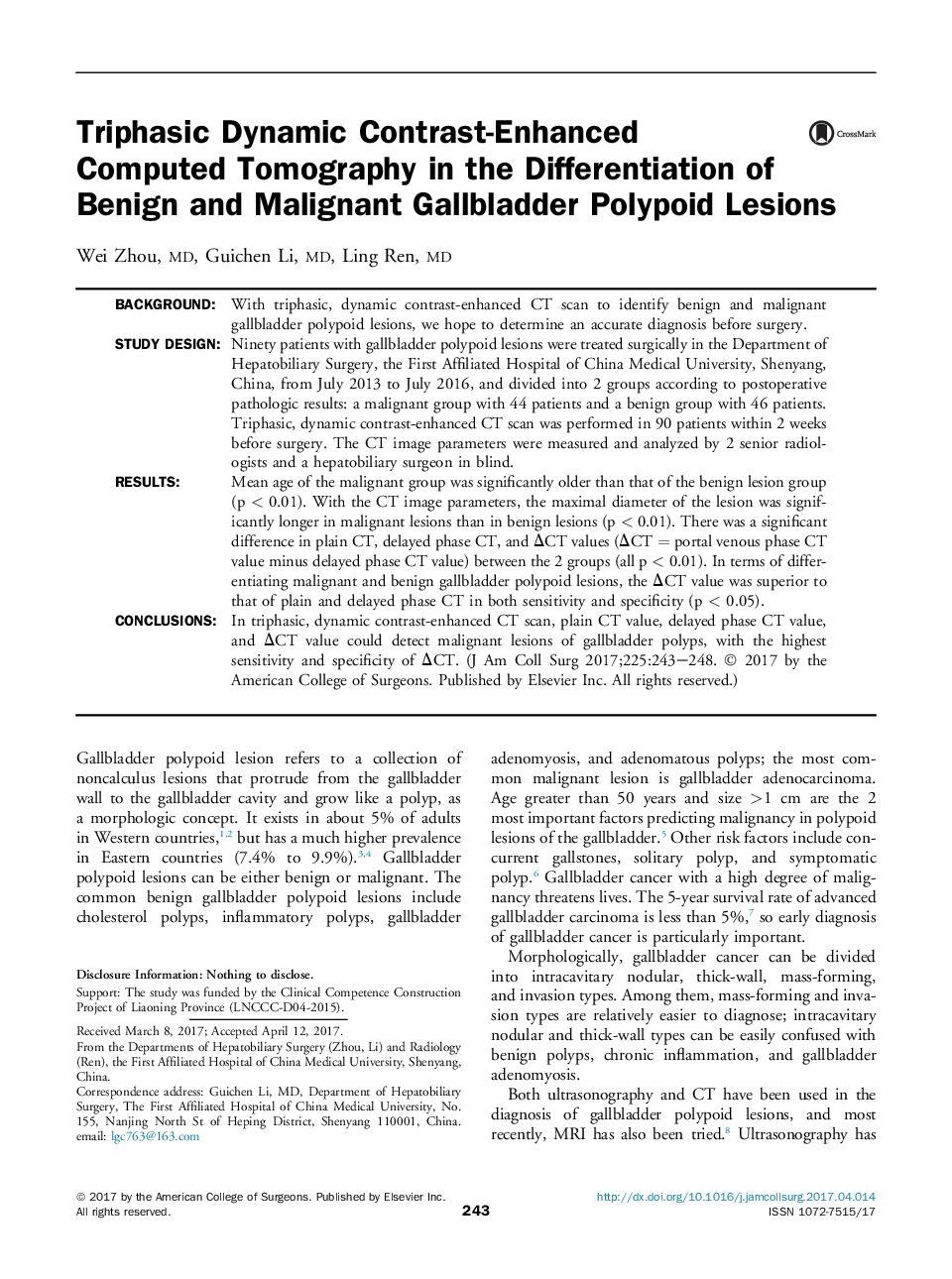| Article ID | Journal | Published Year | Pages | File Type |
|---|---|---|---|---|
| 5733434 | Journal of the American College of Surgeons | 2017 | 6 Pages |
BackgroundWith triphasic, dynamic contrast-enhanced CT scan to identify benign and malignant gallbladder polypoid lesions, we hope to determine an accurate diagnosis before surgery.Study DesignNinety patients with gallbladder polypoid lesions were treated surgically in the Department of Hepatobiliary Surgery, the First Affiliated Hospital of China Medical University, Shenyang, China, from July 2013 to July 2016, and divided into 2 groups according to postoperative pathologic results: a malignant group with 44 patients and a benign group with 46 patients. Triphasic, dynamic contrast-enhanced CT scan was performed in 90 patients within 2 weeks before surgery. The CT image parameters were measured and analyzed by 2 senior radiologists and a hepatobiliary surgeon in blind.ResultsMean age of the malignant group was significantly older than that of the benign lesion group (p < 0.01). With the CT image parameters, the maximal diameter of the lesion was significantly longer in malignant lesions than in benign lesions (p < 0.01). There was a significant difference in plain CT, delayed phase CT, and ÎCT values (ÎCTÂ = portal venous phase CT value minus delayed phase CT value) between the 2 groups (all p < 0.01). In terms of differentiating malignant and benign gallbladder polypoid lesions, the ÎCT value was superior to that of plain and delayed phase CT in both sensitivity and specificity (p < 0.05).ConclusionsIn triphasic, dynamic contrast-enhanced CT scan, plain CT value, delayed phase CT value, and ÎCT value could detect malignant lesions of gallbladder polyps, with the highest sensitivity and specificity of ÎCT.
